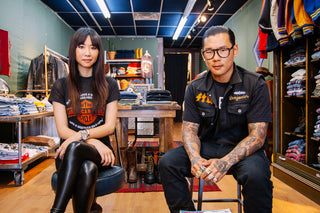For Lot Stock & Barrel founders Benjamin Phillips and Florence Tang, everything they do is backboned by storytelling. After both of their respective backgrounds working at Levi’s and Ralph Lauren, Ben says of their new vintage retail concept, “It’s really rewarding not to have any red tape and be able to present the purest form of a concept or story. We can be as emotionally attached to it as we want to... At no point in time will we ever have to feel responsible of straying from the path of what the most important, inspiring, conceptual identities are.” From their collaboration with East LA chainstitch veteran artists Chain Gang to their careful authentic repairs (“If it’s missing a 1940s button, we’re going to find a 1940s button,” says Florence), each decision they’ve made as a young vintage retailer has been driven by a desire to inspire, engage, and inform that hey, there’s a backstory here.
Last week, I visited their new shop in Downtown LA. The area is quickly churning and developing with the Ace Hotel’s recent downtown debut, and with stores like Tanner Goods, Oak, and Acne pitching tent nearby. Ben and Florence told me about their recent trip to Arizona where they learned about Native American craftspeople and artisanal silver and turquoise jewelry – and excitedly showed me these pre-1937 vintage pieces that they sourced from a man who educated them on the silver’s storied markings. Ben explained that the feathers and thunderbird symbolize a rising closer to god, and that “the arrows represent a straight path – if they’re facing inward, it means we’ll meet again.”
On their shared passion for vintage, Ben said, “It’s always something about the journey... not to sound cliché or anything! But the actual journey and trip involved and the sense of discovery and finding the one thing that triggers that emotional attachment.” I thought about the Greek root of the word nostalgia and how it refers to the ache of returning home and about those Native American arrow markings – the meeting again. Lot Stock & Barrel themselves represent that, in a way – a meeting point for the past to the present, and the richness of movement and narrative in between. It’s much more than vintage retail.
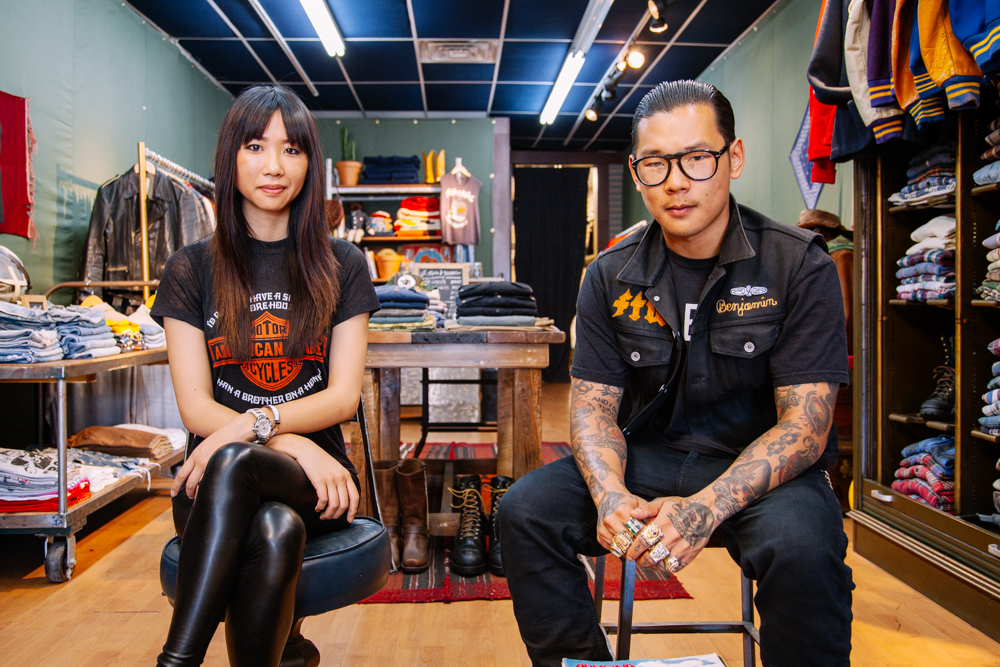
Tell us more about your passion for vintage. When and how did it start?
Ben: With the kind of experience that Florence and I have coming from some of our previous endeavors, we’ve always had positions where we were working in interior design or working in developing certain facets of brand development. A lot of times when you’re trying to grow a brand identity or interior identity, or a clothing line identity, you often look to the past for inspiration. So the opportunity to go source vintage furniture, artwork, and garments kind of always captivated us in a lot of ways. Also, the stories that are retained with those elements is really interesting to us. I have a habit of personifying vintage goods [laughs], like our website is really heavy on storytelling and a little bit of a narrative focus whether it’s inspired by music or film or a certain place in time or a historical event. I think I love – whether it’s a vintage pair of jeans or a vintage denim jacket or a leather jacket or even a table of a specific era – being able to correlate that in my brain to a specific inspirational moment to me. I think it’s really about building a story through pieces. So that’s why we have a passion for it.
Florence: I also think that people nowadays buy things and they don’t know where the inspiration came from or where this piece came from. Or why it’s there, or why this pocket is there, so it really goes back to people looking at vintage pieces. They were there for practicality reasons. There were reasons for why it was designed that way. People these days don’t really think about it, so we have an opportunity to tell that story and show people why. “This is the garment that your jacket is inspired by.”
Ben: There’s a sense of discovery, too. Florence and I often will take trips to source different vintage items. We recently took a trip to Arizona to source vintage silver and turquoise. It’s always something about the journey… not to sound cliché or anything! But the actual journey and trip involved and the sense of discovery and finding the one thing that triggers that emotional attachment, I think, is really important for us. I mean, that’s what keeps us driven to keep going everyday… [to] constantly want to add more interesting items on the site or use our retail location as a vessel to translate the story. It’s transparent in popular culture now more than ever. You know, Pawn Stars or American Pickers have a massive viewership. I think people are enamored with that sense of discovery and treasure hunting.
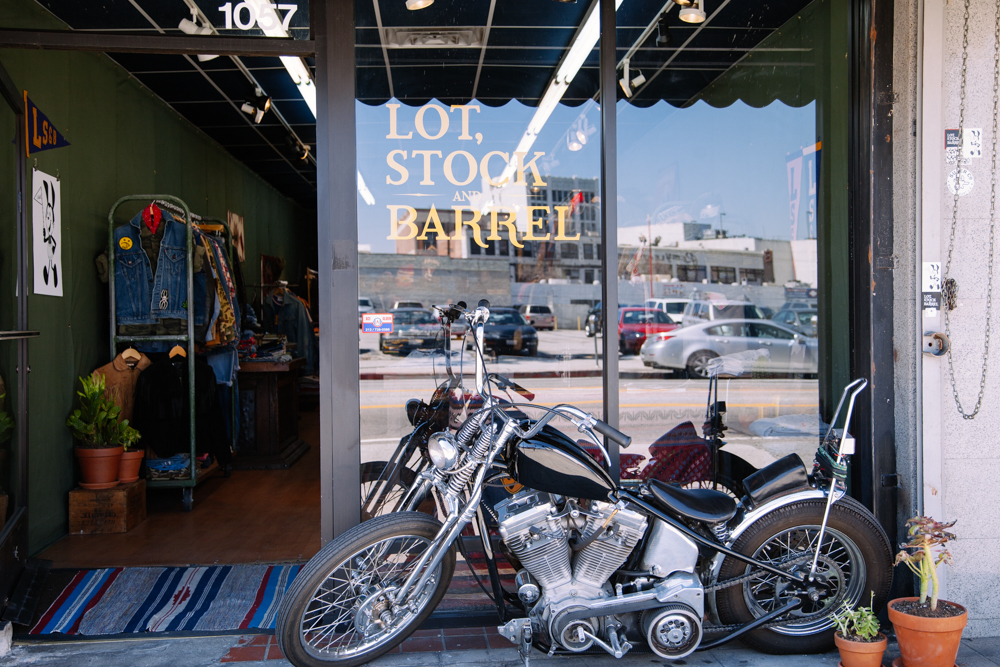
I’m glad storytelling keeps coming up, because on your site, I noticed that you can literally “shop the story.” Right now, you have the Edward Abbey-inspired one – “Desert Solitaire.” Can you expand on why you decided to focus on the concept of “story” more with your shop?
Ben: Unless there’s a backbone for something – unless there’s something really intriguing – I usually don’t get inspired by a brand or clothing line unless there’s some sort of interesting historical aspect or story. There has to be a hook to really reel you in and a true romanticism about something. “Desert Solitaire” is interesting because [laughs] Florence and I read Desert Solitaire and it’s an amazing book and Edward Abbey‘s an interesting man. So you put a really outspoken, intriguing, introspective character and then curate items that pay homage to him that relate to the experiences that he lived as a state park ranger living in isolation in the Utah National Arches Park, and there’s something special there. And you curate items that coincide with [those kinds] of trials and tribulations and thoughtful perspectives on man and nature and the world at the time… That’s captivating to me.
I always want to have a backbone to things we represent. I would never just want to arbitrarily present vintage goods for the sake of presenting, like, a “cool shirt” or a “cool pair of pants.” Or, “Look at this sweatshirt, it goes great to go out on a Saturday night to.” It’s cheesy and I think our clientele and consumer base – I think the marketplace deserves better. People are smarter, information travels faster, so unless you’re bringing something to the table that is more thought provoking or poignant in a way, or culturally stimulating, then I don’t feel it’s worth even going to market, you know what I mean? I don’t want to be known as a guy who is just showcasing product or showcasing a bunch of vintage denim jackets or awards sweaters from the fifties and say, “My inspiration is American bikers,” unless there’s a specific moment in time and you have a chance to educate or a chance to share. That’s awesome. It’s like being a kid with your friends and you get to show them something you found in the woods. It’s the same thing for us. Florence and I travel and find things and we’ll be like, aw, this is the same route Guy Clark and Townes Van Zandt took on their way from LA to Nashville or something like that. If I just say, “look at this jewelry” – it’s kind of bullshit.
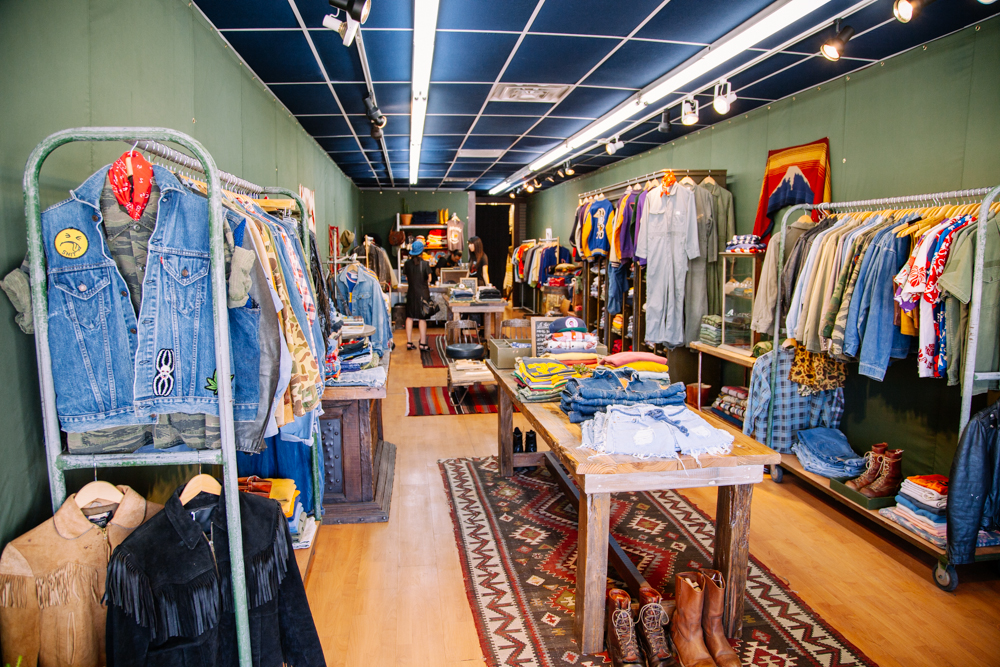
I read your blog story on Chain Gang where you mentioned that the state of contemporary apparel is always trying to find authenticity and realness. With true vintage, by default, already being “authentic” and “real,” how do you guys set yourself apart from that?
Florence: Well, I think that there are a lot of vintage stores out there and usually when you’re at a vintage store, you’re digging for stuff. You’re digging for gold – you’re digging through tons and tons of stuff. We’re different because we merchandise all the product by story, we wash everything so it isn’t smelling like “vintage,” we repair everything accurately – if it’s missing a 1940s button, we’re going to find a 1940s button and repair that shirt with the right button. So the authenticity is that we maintain that throughout all our product.
Ben: There’s other vintage dealers out there. There’s a million Etsy shops, everyone has an eBay account nowadays. There’s some great vintage dealers and lot of them come from an older demographic with old school thought. They’re a little bit more guarded about their secrets and their collections and where they source things and there’s definitely a little bit of an air of arrogance. There’s not much sharing of information. If you think about it, none of the true vintage dealers have websites. None of them are striving to be informative. If anything, they’re a little bit more guarded about the industry.
Florence: It’s very secretive.
Ben: We’re really transparent. I think beyond the fact of just the standard practices of repairing things in an authentic manner and utilizing authentic sundries and trim elements in any refurbishment of goods that we do – that’s an important value to the product itself. But to reinforce what Florence said, no one’s producing these capsules of inspiration; these capsules of time with the product and letting the product personify a moment in time. I think that’s something special that we do. It’s no different. We’re kind of peeling back – and I don’t want to sound pretentious or anything – but in a lot of ways, coming from our background, we’re peeling back a curtain for our industry. What we do on our website is absolutely no different than what Ralph [Lauren]’s design team is doing in their corporate offices on Madison Avenue right now. Their corporate team is buying vintage goods, creating a story, and basing their season off of vintage goods and products and fabrications from a moment in time. But the difference is by the time it reaches the market, the consumer doesn’t even know that or have much insight into the process. They might get a high-level name or title, like “American in Paris Spring/Summer ’15” or something like that. But we’ll go in depth and tell you why an American in Paris in the ’60s was amazing, or why the American Southwest in 1968 was a romantic period in time.
A documentary short about Chain Gang by Lot Stock & Barrel. Tommy D, Tul, and Ed , “affectionately known in East LA car club and bike club circles as the Chain Gang,” are three artists that continue the art of chainstitch embroidery and authentic chenille patch-making.
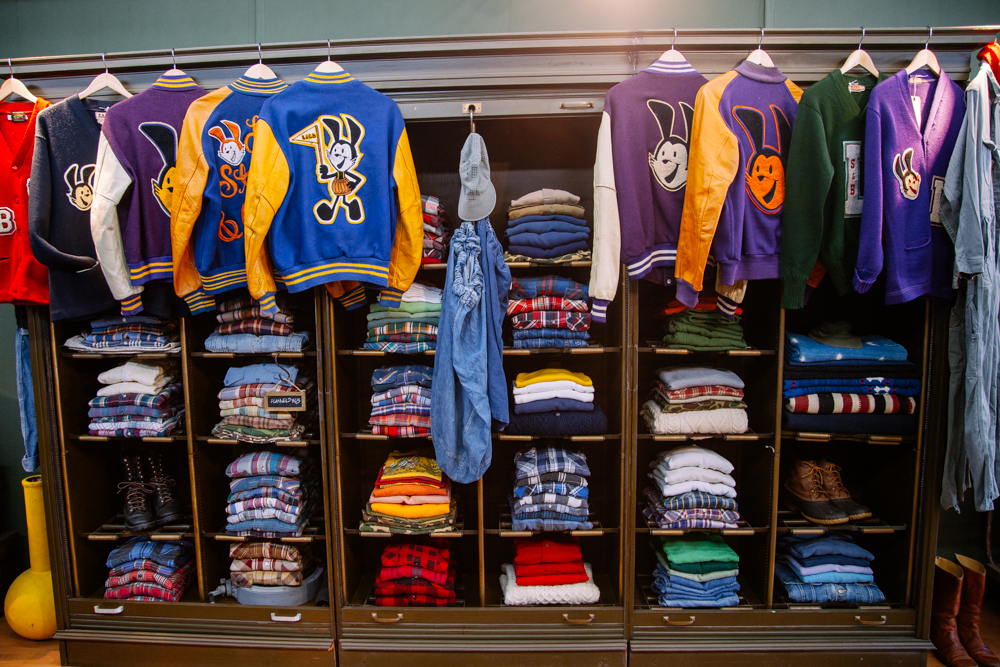
The Lot Stock & Barrel “Elsby” mascot chainstitched onto vintage letterman jackets and varsity cardigans by Chain Gang. A lot of these pieces utilize both chainstitch and chenille – Ben says, “That’s how you get a lot of the depth and texture on the pieces.” You can really tell that this chenille has been done by hand and with care – I learned that these days chainstitch and chenille is often computer-automated, which makes new chenille appear more like carpeting, because it’s so uniform.
Ben: It’s no different than when we were at other design offices – we’re sourcing and creating amazing mood and storyboards and inspirational pieces and taking vintage pieces to the factory – basing updated versions or blocks or garments off of vintage items… But now we’re peeling back the curtain – diving deeper into the story and hopefully restoring everything so that our customers can get a piece of it – a taste of it, too.
It’s a little bit of show and tell from the industry. You’d be surprised, people from our industry would be jaded and say, “Yeah, we all know that. We all know what happens in a design room.” But the world’s broader than what we all know as creative professionals in the apparel industry.
Florence: The public doesn’t know. I think the younger demographic doesn’t really know about the history or the world of vintage. Or that what they’re buying is based mostly off of vintage garments. Our price points are very reasonable because we want the younger demographic to come in and discover where it came from, read the story, and inform themselves. That’s important to us.
Ben: I respect a lot of people in the vintage industry, but I’m not trying to compete with some of those guys who have, like, amazing 1920s vintage overalls and things like that. I can’t compete with that. They’re 50, 60 years old. I’m 31. We still have some really exciting, engaging things. If we can educate a new audience, a younger audience – that’s exciting to us. I like meeting a guy who’s 25 years old and his eyes light up when you explain the history of the [Levi’s] 501 to him.
Florence: They’re usually really surprised. Every time we tell a story it’s engaging and fun, actually, when someone steps into the store and leaves with something they didn’t know.
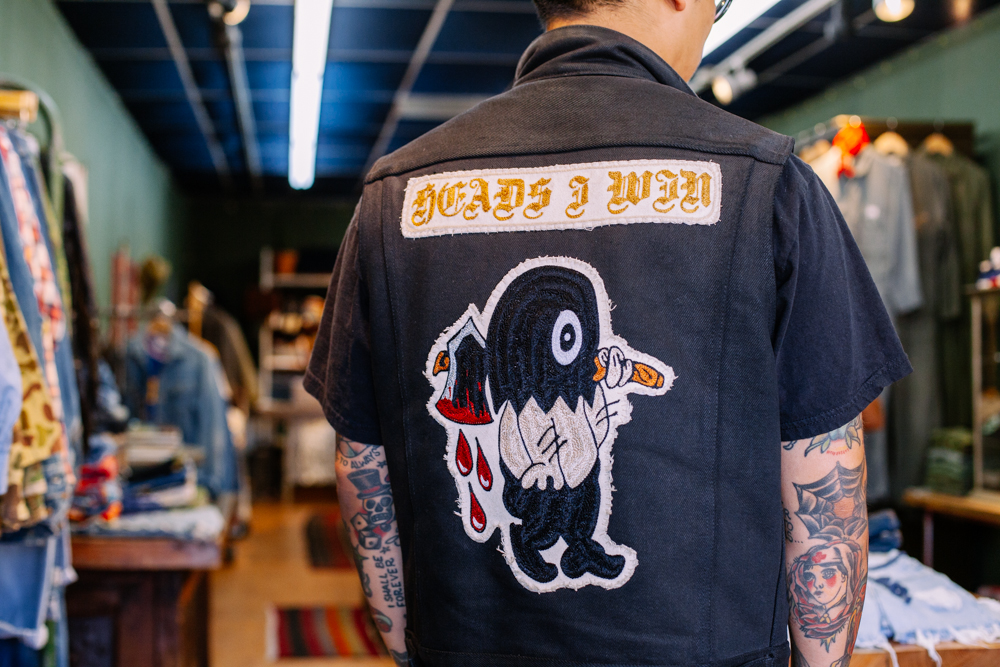
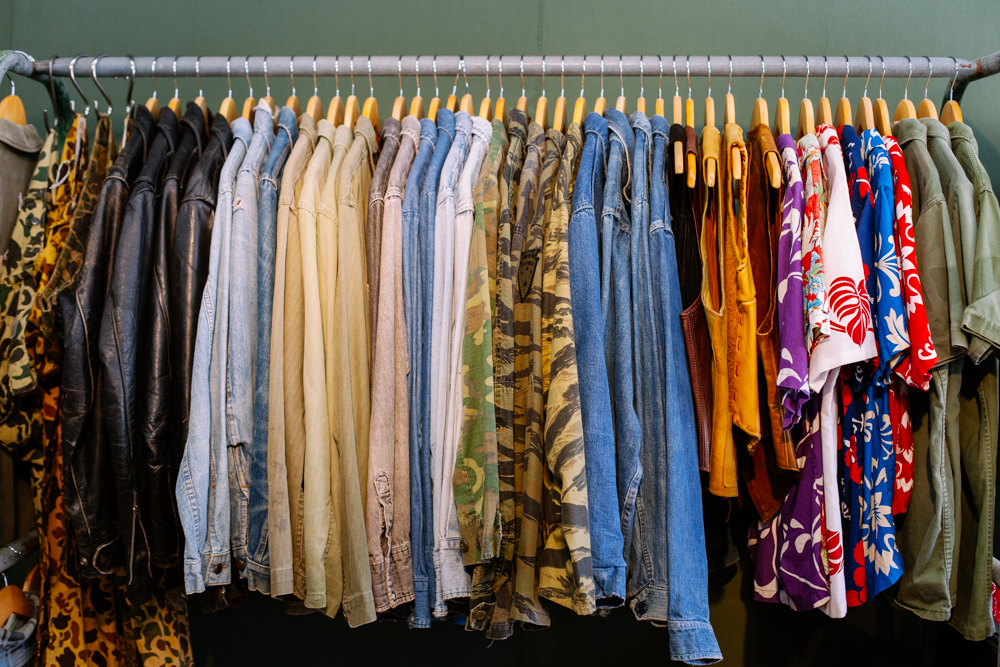
With your work together at Levi’s and Ben’s previous work with Ralph Lauren, what did you pick up that was most valuable and what do you aim to do differently with Lot Stock & Barrel?
Ben: I was really lucky and blessed to have the opportunity to be at two iconic, classic American staples of the apparel industry. Both with an incredible history. I definitely learned a lot from some really good people at both of those companies. But there is a massive difference in the approach to growing a brand when you’re venturing out on your own with something that you’re wholly responsible for. From the aesthetic value, tone, and the value of what that brand represents to the marketplace, it’s now your story, and you will be forever connected to what you create. The rewarding thing for me is that, at no point in time will I ever have to – well, I’m praying, I’m hopeful! – but that I will never have to compromise the integrity of what story we want to tell. That we’ll never have to compromise what our store looks like or what our website says or what we do in the marketplace or what we look like at a trade fair. It’s really rewarding not to have any red tape and be able to present the purest form of a concept or story. We can be as emotionally attached to it as we want to, knowing that there’s no one at a giant corporate office… Really, at the end of the day, both of those places are just giant marketing machines to feed the bottom line and to make shareholders happy. At no point in time will we ever have to feel responsible of straying from the path of what the most important, inspiring, conceptual identities are. I think that’s rewarding. We can dive in headfirst into the deep end of a story and never have to pull back once. And I think that’s really exciting for us.
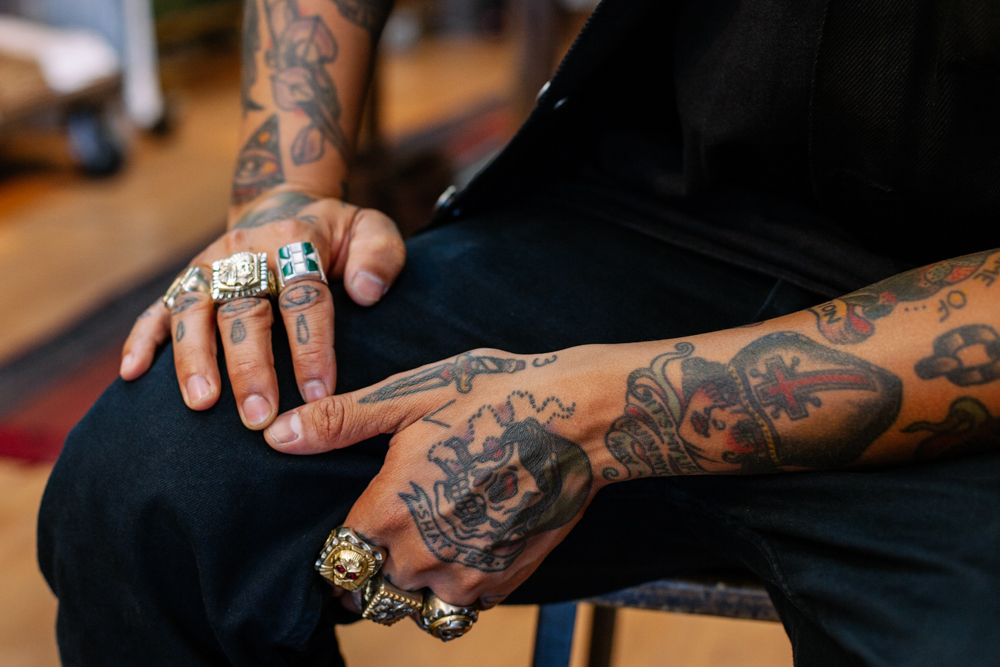
Ben: If I want to go on a tangent and talk about Guy Clarke, who’s an amazing singer-songwriter and guitar-builder – and curate a 50-piece vintage program around that and never pull back once because I don’t think it’ll be commercially viable – that’s rewarding to me. It’s rewarding that we have the freedom to engage with other people and other craftsmen or artists and, you know, never have to get approval for it. Approval from some Senior Manager, who then has to talk to a Senior Director, who then has to talk to a Creative VP, who then has to clear the budget through Accounts Payable. And then by the time that you even do get approval, the person doesn’t even want to deal with you anymore. [Now] I can go out and meet a guy who’s lived in Topanga Canyon for his whole life, grew up with his family, and got kicked off his land in the early 2000s by the government and puts out a punk rock zine. I don’t have to rationalize that with some Senior Director somewhere at a company and sell them the value in that. Because I intrinsically know that there’s value in it. I know he has an amazing story. And I know he has an amazing stock archive of photographs that I want to see – and I want to share with him some amazing vintage pieces from the ’60s that are so inherently California that remind me of a romantic time I read in his zine. I can go talk to him. And I don’t have to get permission from someone in a corporate office who doesn’t leave their desk all day. And I don’t want to sound harsh, or resentful – because I wouldn’t be where I am without those companies. We need those companies. They paid our bills. I wouldn’t have an apartment or a career without them. But I think those same amazing talented people would tell you the same thing. It is a drag sometimes having to get approval after approval and sometimes there’s missed opportunity there. I think it’s nice not having to miss any opportunities. It’s harder and it’s definitely more trying to get things done, but, you know, all three of us could go on a trip tomorrow somewhere and tell our story and photograph it… and we wouldn’t have to send our photos to HR to approve [laughs]. I really like the freedom. We can work with Chain Gang! If we were with a major global corporation…
Florence: They probably wouldn’t have produced fast enough for [a corporation]. You know, they wouldn’t have produced as many pieces as they would want. The great thing about working with small teams and small creative firms is that we can work with them and we can do things in small runs. We can give them our mascot and say, “We appreciate your craft. Do what you want with it.” There’s no creative freedom and leeway in mass production.
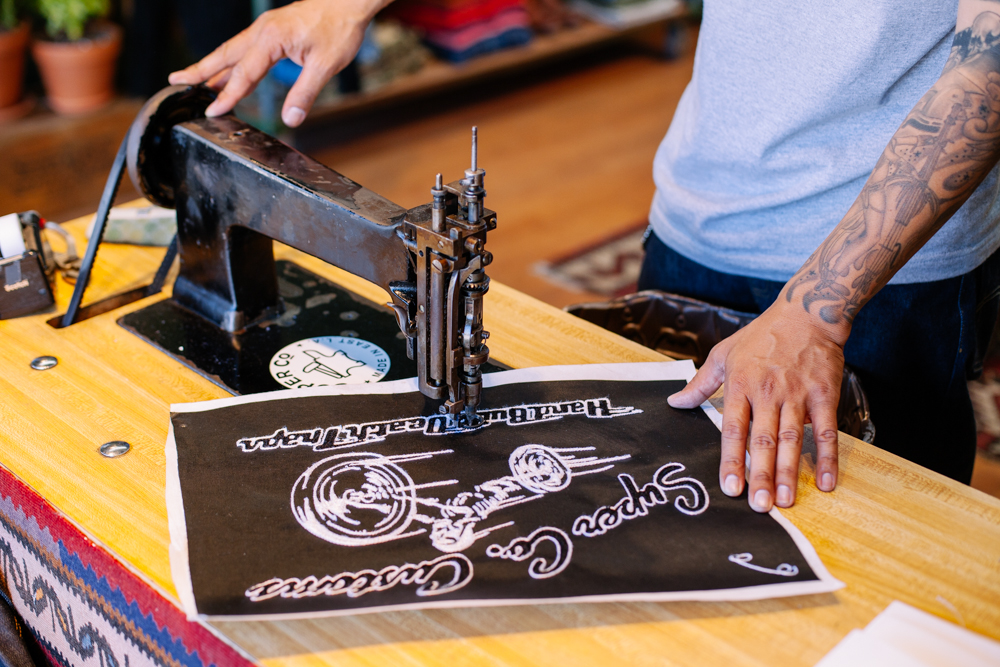
Tul from Chain Gang’s work station in Lot Stock & Barrel’s storefront.
How does it feel to be here on this side of Downtown LA among all these stores that have been springing up near The Ace? Do you feel like you’re a part of that?
Ben: I don’t know if it was a conscious effort to be honest! We were very lucky to find the space and were utilizing it more like a workshop. A work studio where we were shooting our photography for the website, our flat images – we’re keeping our inventory here, doing repairs here. We’re actually connected to a factory in the back so we’re able to be quite flexible in doing anything from custom tailoring of vintage goods to even doing some production and manipulation in terms of our refabricating and refurbishing. It’s an advantage to us. It was almost the thought of the fact that a lot of places were launching down here that we decided to more or less take advantage of it. It happened organically.
So this was purely a work space before? It wasn’t a storefront?
Florence: No, we were mostly taking photography shots here…
Ben: And it was an UGLY building! [laughs] This was an ugly space. If you peel back the layers of vintage deadstock military canvas [from the walls], it’s all slat wall. We covered the ceilings in indigo chambray. It was horrible. It looked like a hair extension outlet. It was just not beautiful at all.
Florence: Because we’re used to working with some sort of budget in the past when we launched stores for [the] previous companies that we worked at. This store was literally zero budget. We had to make do with what we had – we DIY’ed a lot of the stuff. It’s been definitely a journey and we’re constantly trying to fix things in the space.
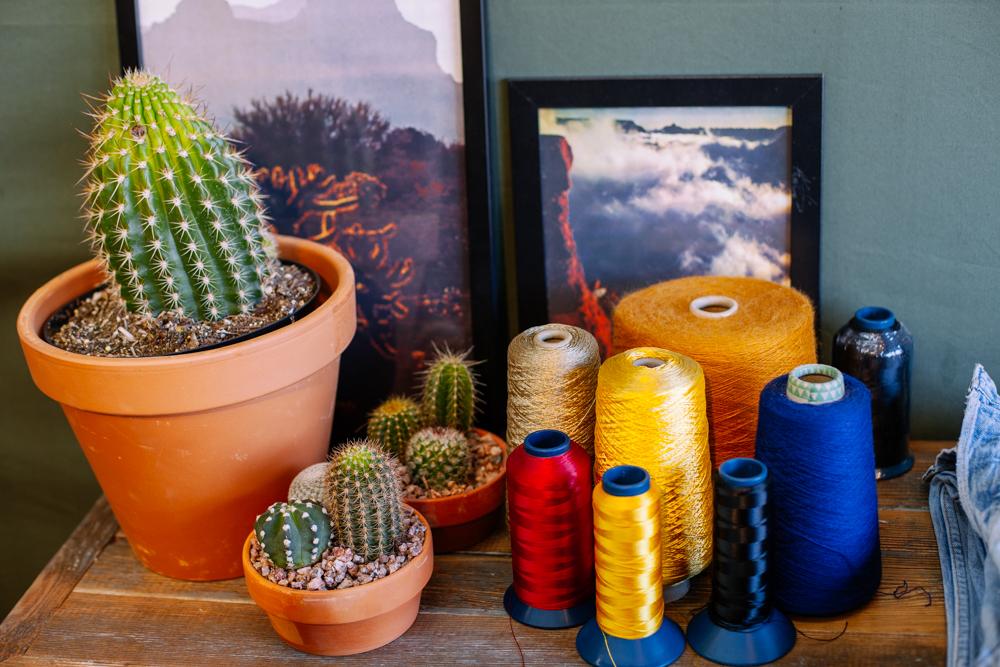
Wow, I couldn’t even tell! You guys did a really great job.
Ben: If you took off the blue chambray off the ceiling tiles, it’s like that cheap office drop-ceiling. That crumbly – it looks like blue cheese or something. All these fixtures were basically from our buddy’s salvaged junkyard. They were outside rusted. We had them sandblasted – all this stuff. It’s not like a Margiela store, but [laughs].
Florence: It’s not perfect, but we really like where everything came from. We like that it took a lot of effort to put this together. It’s… our store.
Ben: At the end of the day, it’s our store. That’s a nice way to put it. It’s as organic and DIY as possible, but there’s definitely character in everything.
Florence: Nothing matches [laughs]. It’s different from all the other stores. It’s not an Acne store, it’s not a Tanner Goods store. It has its own personality, it’s own character. That’s what we love about it.
::
::
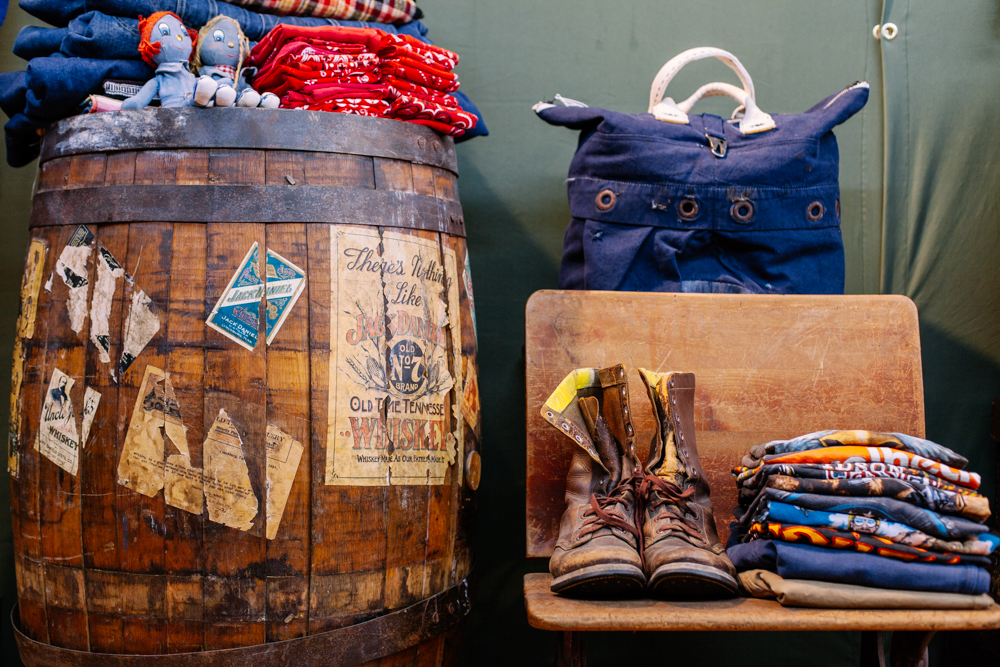
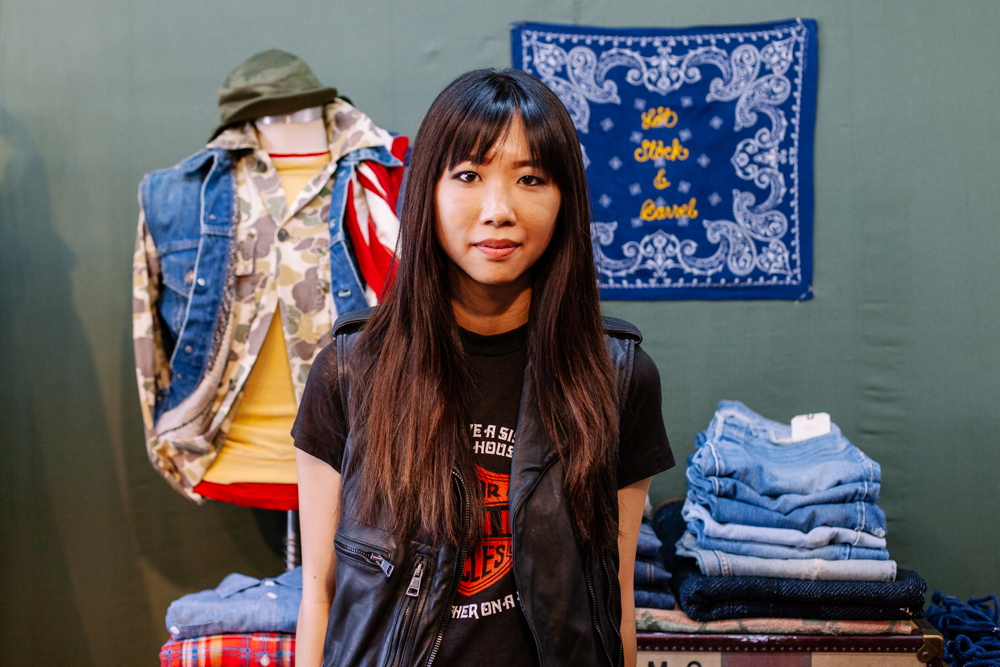
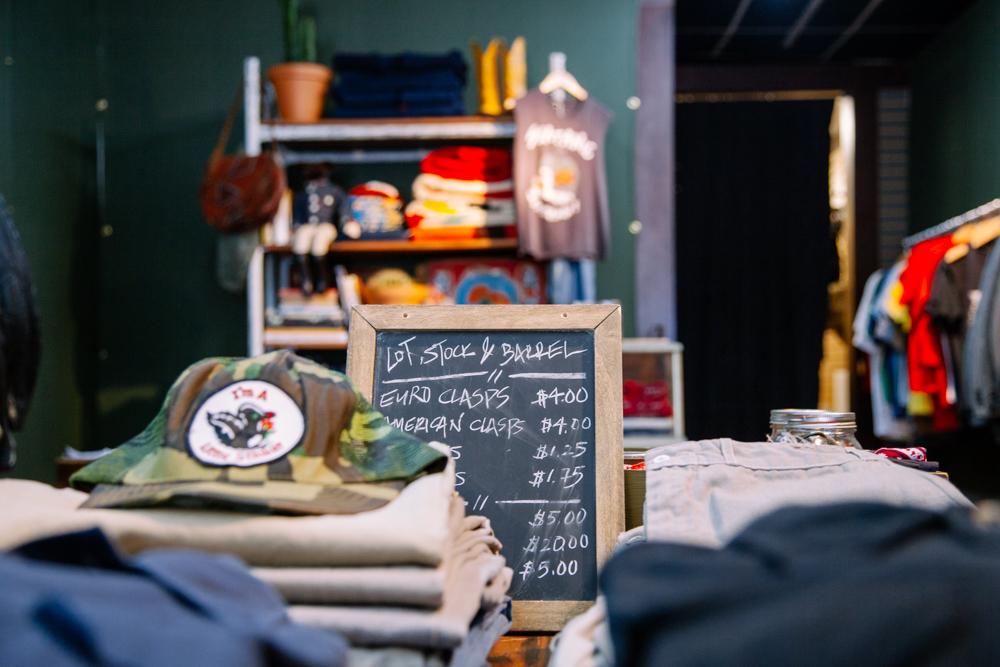
Find Lot Stock & Barrel at 1057 S Main St., Los Angeles, CA 90015, and on Instagram, Facebook, and Twitter.

